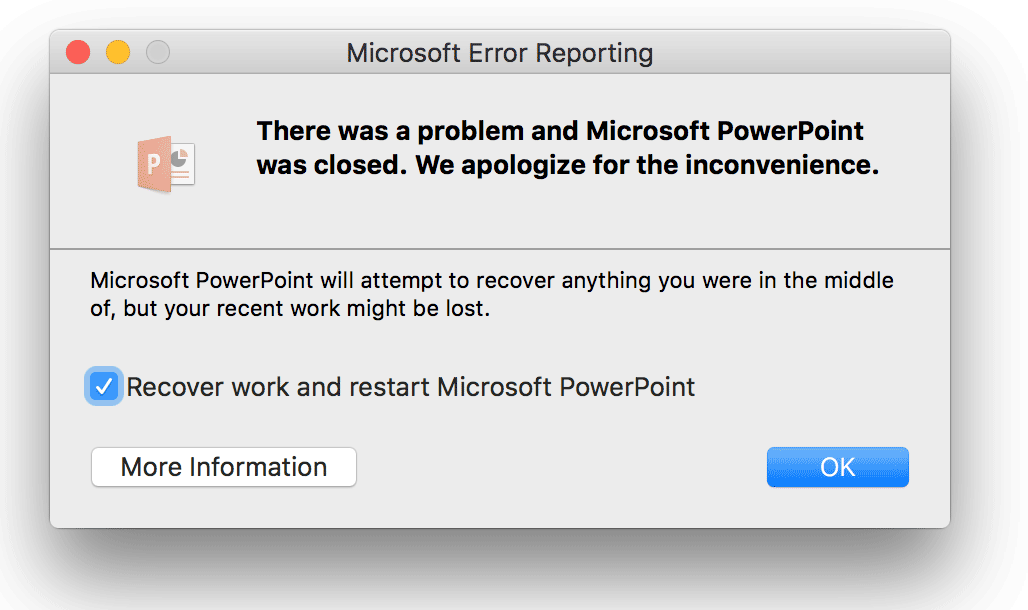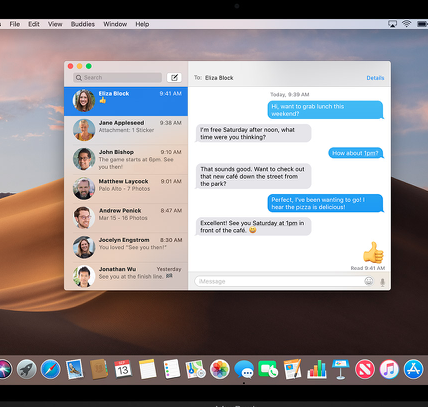Problems viewing messages and mailboxes. If a mailbox is offline. If searching doesn’t find the right emails. If emails aren’t displayed or look strange. If emails appear to be missing. If you can’t open Mail. If messages are in a Recovered Messages mailbox. In order to use Messages, you need to have a unique and unregistered Mac serial number. If your Mac is genuine Apple hardware, this won’t be an issue at all. It’s when you start working with Hackintosh systems – ersatz Macs built from off-the-shelf parts and a modified version of macOS – that you start running into problems. Check whether Mail is retrieving a large message or a message with large attachments. I use the Verizon Messages app on my phone, tablet, a Windows computer and a Mac (the latter being the corporate computer). A couple of years ago, I.T. Upgraded the network, adding additional securities and firewalls. All of these updates affected nothing I use on the work computer except for this Verizon Messages.
Mail User Guide
In the Mail app on your Mac, if you’re certain you’re not receiving messages, even after clicking the Get Mail button in the Mail toolbar, try these suggestions.
Check whether Mail is retrieving a large message or a message with large attachments. See View Mail activity.
Check if you’re using filters in the message list that are preventing expected messages from being shown.
Try sorting messages in the message list by Date or another attribute, or searching for messages, to verify if you received them.
Check whether your account is offline or disabled (inactive).
If you’re missing emails from a specific person or group, check whether you blocked messages from them.
Try quitting Mail, then opening it again.
Choose Window > Connection Doctor, then follow any instructions in the Details column. Check for problems logging in to email accounts or with the incoming mail server, or with firewall software blocking network traffic.
Check whether you’re affected by another firewall, such as software installed separately from macOS or built into an internet sharing router, or administered by your email account provider. Contact the appropriate person for information.
If you’re still having problems, contact your email account provider to verify your user name, password, incoming mail server, and other required information. Then verify the information is entered correctly in Mail account preferences.
If you’re logged in to a network using VPN, also make sure that you entered your VPN password correctly.
Sep 28, 2020 • Filed to: Solve Mac Problems • Proven solutions
While many of us are constantly glued to our devices, we do find ourselves in situations we can't handle. We may have been using the same MacBook for years but our devices rarely cease to surprise us. Sometimes we are unable to deal with error messages in times of need. This is a serious issue as individuals today function as efficiently as their devices.
This article takes you through the possible courses of action you can take to deal withcommon Mac error messages.
- Message 1: 'Your disk is almost full'
- Message 2: 'The application * program name* is not open anymore'
- Message 3: 'Safari Web content quit unexpectedly'
- Message 4: Enter password for your iCloud ID
- Message 5: 'You can't open the application because it is not supported on this type of Mac'
- Message 6: Mac displays a folder with a question mark
- Message 7: Mac OS X Kernel Panic

Message 1: 'Your disk is almost full'
Messages For Mac Download
Reason:
This happens when your storage space is getting filled up and you are in the process of downloading more items. It may be because you either have a few heavy files or apps, or because you haven't cleared your storage files in a long time.
Solution:
- Emptying your trash can to ensure deleted items have been removed from all locations on the computer.
- Your Downloads folder is yet another location that accumulates large files that are no longer necessary. The ones you need probably are even saved in other locations as well. You can free up a lot of storage space by deleting unnecessary files.
- Check your storage, About This Mac -> Storage. Here you can see what takes up most of your disk space. These could be photos and videos you no longer need. Delete as many as possible.
- You can locate large files on your Mac by:
・ In any folder in the Mac Finder, press Command+F.
・ Search 'This Mac'.
・ Your primary operator should be 'File Size' and the secondary operator should be 'is greater than'.
・ Select a file size. ( This way you can easily trace the redundant large files and delete them.)
- If the error message still appears, restart your Mac and recheck the disk space.
Message 2: 'The application * program name* is not open anymore'
Reason:
This is a bug seen even on recent models of the Mac and is a fairly common Mac error message that has troubled several users. Some attribute it to the RAM. The message implies that while the App may be open, it is unresponsive and in turn unusable for a while.
Solution:
Rebooting is a common remedy in this scenario. However, a simpler method is to stop the app, that is, quit it and then launch it again. There are two ways to do this:
- Simultaneously press the Command, Option, and Escape keys and target the app you want to Force Quit.
- If the app isn't available in the Force Quit menu, you can quit it by selecting it in the 'Activity Monitor'.
After 'Force quitting' the process, you can relaunch it. Generally, they resume their work without any further hassles.
Message 3: 'Safari Web content quit unexpectedly'
Reason:
This is a bug seen on even recent models of the Mac and is a fairly common Mac error message that has troubled several users. Some attribute it to the RAM. The message implies that while the App may be open, it is unresponsive and in turn unusable for a while.
Solution – a variety of quick fixes are in place to solve this issue:
- Free up cache data. To do this follow these steps:
・ Click Safari. Select Preferences and choose Advanced.
・ Select the 'Show Develop menu in menu bar' box.
・ In the Safari menu, click Develop then Empty Caches.
- Check for updates and make sure you are using the most recent version of Safari. An update must have been released that you accidentally overlooked. To check for updates, open the Mac App Store and select Updates.
- Clear History. History occupies a lot of RAM and in turn makes the app crash. You can clear history by going to History > Clear History.
This is a fairly popular error message and has many more solutions. The ones mentioned above are the few that are used widely.
Message 4: Enter password for your iCloud ID
Reason:
This common mac error message that occurs while the user is browsing is attributed to many factors. It could be due to cache memory overflow, or even due to add-one and extensions that help improve your internet experience.
Solution:
Get Text Messages On Mac
If you are suspicious of the dialogue box, scan your Mac for any malware. Otherwise, follow the steps below:
- In the Apple menu, select System Preferences.
- Choose iCloud and sign-in. If it appears that you've already signed-in, sign-out then sign-in once more.
This would make sure such error messages don't pop-up again.
Message 5: 'You can't open the application because it is not supported on this type of Mac'
Reason:
This common Mac error message is due to an outdated version of your OS. It also may occur because the version of the app and that of your Mac are not in sync.

Solution:
Update the program to its most recent version available on the Store. If this message appears despite the update, consider going back to an old edition of the Mac, so that the program and the computer are compatible.
Message 6: Mac displays a folder with a question mark

Messages For Mac Problems Ipad
Reason:
This common Mac error message is due to an outdated version of your OS. It also may occur because the version of the app and that of your Mac are not in sync.
Solution:
While booting your Mac, press the Alt key. If the problem persists, you might have to use Recovery Partition and install an older version of the Mac OS.
Message 7: Mac OS X kernel panics
This is the least common Mac error message. This is also the scariest because it is rare and most people generally don't know how to tackle this. It occurs when the Operating System detects an error it can't fix.
Solution
You just need to press and hold the Power key till it switches off. Press the Power key again to turn on your computer. If such messages appear again, there may be some problem with the internal machinery of your laptop, like the RAM or the graphics card.
Conclusion
These issues may appear alarming the instant they occur but they are fairly simple to tackle. All you need is a little assistance from forums online and you're good to go. However, if any or all the above messages appear too often, it's time to surrender your Mac for a thorough check-up. There may even be a need to replace certain hardware.
What's Wrong with Mac
- Recover Your Mac
- Fix Your Mac
- Delete Your Mac
- Learn Mac Hacks
